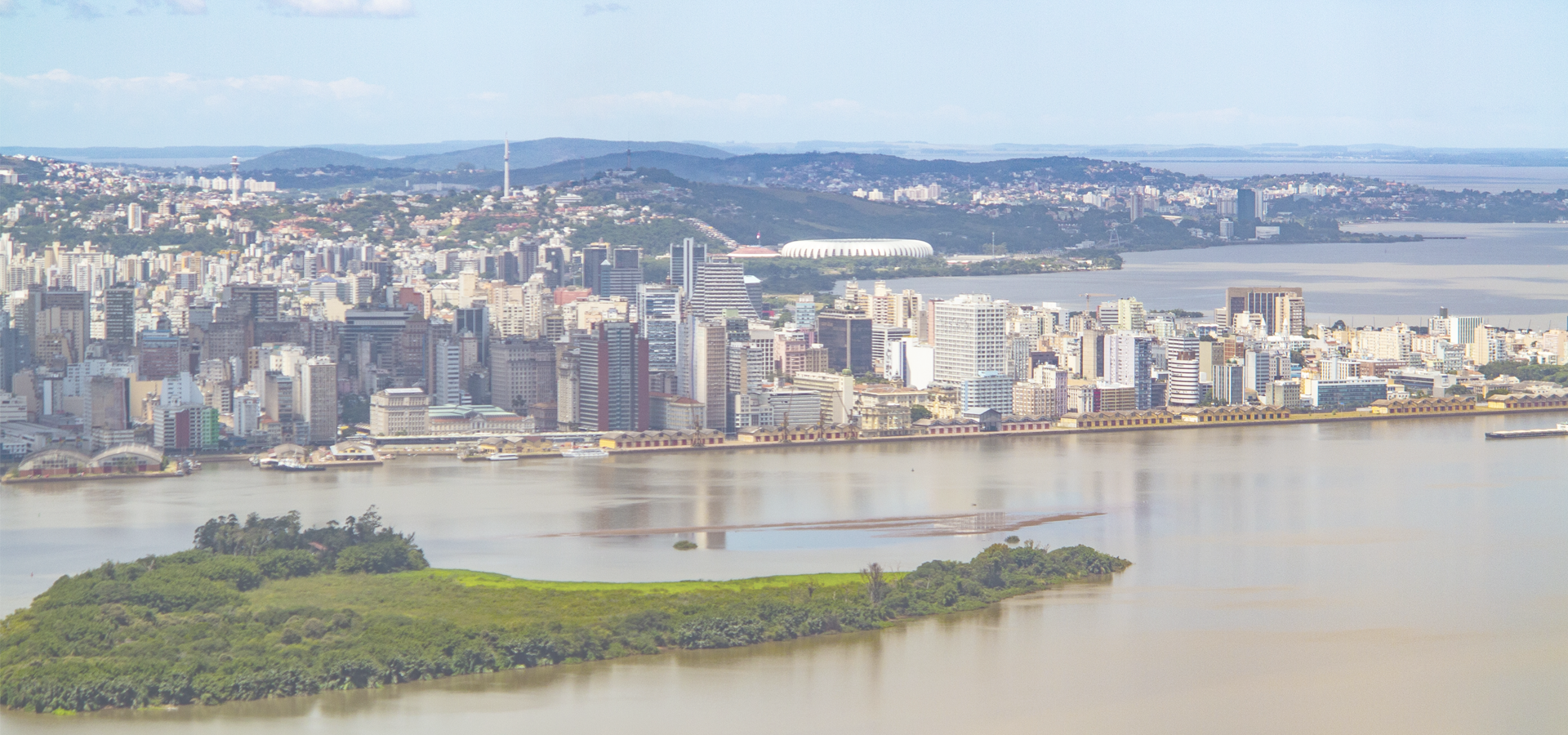Gravataí, Rio Grande do Sul, South Region, Brazil
🇧🇷 Gravataí is a Brazilian municipality near Porto Alegre at the Rio Grande do Sul State. It is the sixth most populous city in the state. The city is divided into five separate districts: Gravataí, Barro Vermelho, Ipiranga, Itacolomi and Morungava. The main supply of drinking water is provided by the Gravataí River, formed at Banhado Grande and flowing west into the city towards the Guaíba estuary.
History The land where Gravataí is located was subject of dispute between Portugal and Spain until 1750, when they signed the Treaty of Madrid. Originally known as Aldeia de Nossa Senhora dos Anjos, Gravataí was founded on April 8, 1763 by settlers designated by the Portuguese to consolidate the crown presence in the region, led by Pedro Gonçalves Sandoval and João Lourenço Veloso. In 1772, the São Pedro province governor José Marcelino de Figueiredo started to develop the town. He built schools, mills and pottery facilities.
Then known as Aldeia dos Anjos, in 1806 the town was declared a district of Porto Alegre. By 1880 Gravataí was chartered as a borough ("Vila" in Portuguese). On March 2, 1938, the Executive order #311 declared Gravataí a city.
Geography According to the Brazilian Institute of Geography and Statistics, the city has a total area of 463.5 km² (192.2 square miles) divided into five separate districts (boroughs): Gravataí, Barro Vermelho, Ipiranga, Itacolomi and Morungava. The main supply of drinking water is provided by the Gravataí River, formed at Banhado Grande and flowing west into the city towards the Guaíba estuary.
Economy Agriculture was essential to Gravataí's economy during its first two centuries. After the 1950s the city started a process of industrialization. This process was accelerated in 2000 after the inauguration of a General Motors manufacturing plant. Since its opening 600,000 cars have been built, more than one hundred thousand Chevrolet Celta (also known as Suzuki Fun) and Chevrolet Prisma per year.
Today, manufacturing is the major economic driver and Gravataí has been classified as a blue collar city.
Education Gravataí has three colleges and universities offering bachelor's and professional or master's degree programs: Universidade Luterana do Brasil, FACENSA, and Faculdade QI. • Preschool: 69 • Elementary and Middle school: 100 • High school: 23
Transport By land, Gravataí is practically midway between São Paulo and Buenos Aires, the two main economic centres of Mercosur. The interstate highway BR-290 passes through the city and connects to BR-101 highway. Rio Grande do Sul capital, Porto Alegre, is 16 miles (26 km) to the west.
Interstates and major highways • BR-290 – Runs east-west just south of the city and is accessible from Gravataí via exit 74 (RS-118) and exit 68 (General Motors plant); provides access to Porto Alegre (westbound) and to the coastline (eastbound). • RS-020 – Connects the town to Taquara and the Serra Gaúcha (the Gaucho Highlands). • RS-030 – Runs through the city parallel to BR-290 and connecting Gravataí to Santo Antônio da Patrulha and Osório, ending in Tramadaí City (in the Atlantic Coast). • RS-118 – Is a very important metropolitan perimeter highway connecting Gravataí to Esteio (northbound) and to Viamão (southbound), crossing by the Alvorada, Cachoeirinha and the Sapucaia do Sul Cities.
Transport: Air The closest airport to the city is the Salgado Filho International Airport, located off BR-290 highway, 14 miles west of Gravataí.
Transport: Public Public transit throughout the region is provided by SOGIL, Unesul, VICASA, and TransCal.
Waterways Though it is not used for transporting goods and materials, the Gravataí River is a navigable waterway for boating.
Porto Alegre, Rio Grande do Sul

Gravataí has a population of over 280,000 people. Gravataí also forms part of the wider Porto Alegre metropolitan region which has a population of over 4,405,760 people.
To set up a UBI Lab for Gravataí see: https://www.ubilabnetwork.org Twitter: https://twitter.com/UBILabNetwork
🇿🇦 Chatsworth -29.91
🇧🇷 Sapucaia do Sul -29.842
🇿🇦 Hammarsdale -29.817
🇿🇦 Mpumalanga -29.817
🇧🇷 São Leopoldo -29.772
🇧🇷 Uruguaiana -29.772
🇧🇷 Cachoeirinha -29.95
🇧🇷 Porto Alegre -30.028
🇦🇺 Coffs Harbour -30.3
🇧🇷 Caçapava do Sul -30.5
🇦🇷 Cruz del Eje -30.733
🇧🇷 Adamantina -51.076
🇧🇷 Cachoeirinha -51.083
🇧🇷 Novo Hamburgo -51.128
🇧🇷 Sapucaia do Sul -51.146
🇧🇷 São Leopoldo -51.149
Locations Near: Gravataí -50.9833,-29.9333
🇧🇷 Cachoeirinha -51.083,-29.95 d: 9.8
🇧🇷 Alvorada -51.079,-30.001 d: 11.8
🇧🇷 Viamão -51.023,-30.088 d: 17.7
🇧🇷 Sapucaia do Sul -51.146,-29.842 d: 18.7
🇧🇷 Canoas -51.183,-29.915 d: 19.3
🇧🇷 São Leopoldo -51.149,-29.772 d: 24.1
🇧🇷 Porto Alegre -51.229,-30.028 d: 25.9
🇧🇷 Campo Bom -51.05,-29.667 d: 30.3
🇧🇷 Novo Hamburgo -51.128,-29.683 d: 31.1
🇧🇷 Montenegro -51.45,-29.683 d: 52.9
Antipodal to: Gravataí 129.017,29.933
🇯🇵 Amami 129.483,28.367 d: 19835.1
🇯🇵 Kagoshima 130.55,31.6 d: 19778.9
🇯🇵 Satsumasendai 130.299,31.808 d: 19773.3
🇯🇵 Kanoya 130.847,31.382 d: 19777.2
🇯🇵 Izumi 130.36,32.073 d: 19744.9
🇯🇵 Amakusa 130.197,32.456 d: 19713
🇯🇵 Miyakonojō 131.079,31.809 d: 19728.3
🇯🇵 Kobayashi 130.971,31.987 d: 19720.3